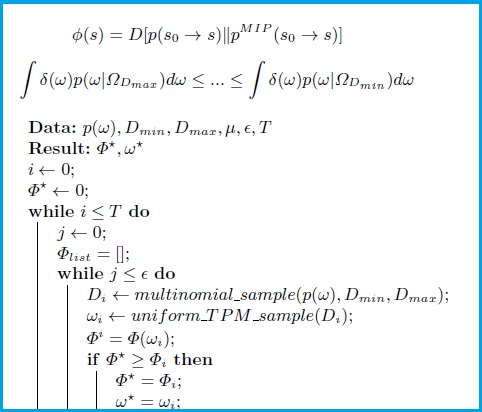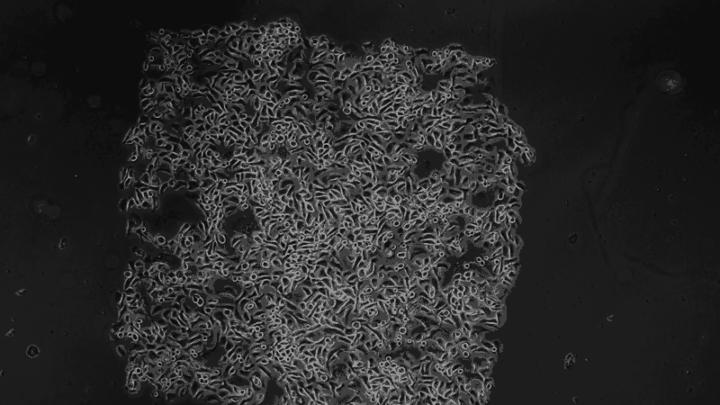
Write something
We are Moving!
Hey folks come follow us on our Reddit Group Here! https://www.reddit.com/r/FrequencyHealingGroup/ Soon we will also have a platform set up on Locals, this link will be announced soon. The features and functions available to us on these platforms make more sense for us in serving you. We may come back to Skool at some point but the other platforms are more appealing currently. Thanks for your interest and participation!
Consciousness & the State of NOW;
Consciousness & the State of NOW; Test of the Consciousness Causes Collapse; Optimizing Integrated Information with a Search Algorithm; Collective Consciousness & World-Soul; General Principles for Modelling the World; Universal Consciousness & Quantum Resonance; Subjective Memories in TGD Theory; & IIT, TGD, ZEO & Qualia.Journal of Consciousness Exploration & Research "Instantaneity Space, Subliminal Priming,Optimizing Integrated Information, World-Soul, & Quantum Resonance" athttps://jcer.com/index.php/jcj/issue/view/130Vol 15, No 3 (2024) Table of Contents Consciousness &t he State of NOW – Instantaneity Space Armand F. Lewis Replication of Results from a Test of the Consciousness Causes Collapse Interpretation of Quantum Mechanics Using Subliminal Priming Methodology Richard J. Lucido Optimizing Integrated Information with a Prior Guided Random Search Algorithm Eduardo C. Garrido Merchan, Javier Sanchez CañizaresExplorations Collective Consciousness & World-Soul: From Ancient Sages, to Jung, to a Hyperdimension of SelfsChris H. Hardy Universal Consciousness & Quantum Resonance: A Theory of Cosmic Interconnectedness Nabeel Khan How Subjective Memories Are Realized in TGD Inspired Theory of Consciousness? Matti Pitkanen IIT, TGD, ZEO & Qualia Matti Pitkanen
0
0

Your Textbooks Are Wrong, This Is What Cells Actually Look Like
Your Textbooks Are Wrong, This Is What Cells Actually Look Like https://www.youtube.com/watch?v=9euW5iCjKDo
0
0
Researchers use electric fields to herd cells like flocks of sheep
Researchers use electric fields to herd cells like flocks of sheep "Scientists have long known that naturally occurring electrochemical signals within the body can influence the migration, growth and development of cells—a phenomenon known as electrotaxis." EXCERPTS ; "...a device that can herd groups of cells like sheep, precisely directing the cells' movements by manipulating electric fields to mimic those found in the body during healing. The technique opens new possibilities for tissue engineering, including approaches to promote wound healing, repair blood vessels or sculpt tissues." "What the cells perceive is sort of a virtual angle, and that allows us to program any complex maneuver, like a full circle," said Cohen. "That's really surprising—that's an amazing level of control that we wouldn't have expected to be possible, especially with thousands of neighboring cells executing these maneuvers on command." They found that the cells time-averaged signals generated along the two axes over a time window of about 20 seconds: Turning on the vertical electric field for 15 seconds and the horizontal field for 5 seconds, for instance, would cause the cells to migrate more in the vertical than in the horizontal direction. "It's kind of like an Etch A Sketch," said Zajdel, referring to the classic drawing toy in which lines can be created in any direction by turning two control knobs. "We've got the horizontal and the vertical knobs, and we can get the cells to trace out arbitrary trajectories in the whole 2-D space just by using those two knobs." Scientists have long known that naturally occurring electrochemical signals within the body can influence the migration, growth and development of cells—a phenomenon known as electrotaxis. These behaviors are not nearly as well understood as chemotaxis, in which cells respond to chemical concentration differences. One barrier has been a lack of accessible tools to rigorously examine cells' responses to electric fields. The new system, assembled from inexpensive and readily available parts, enables researchers to manipulate and measure cultured cells' movements in a reliable and repeatable way. In a paper published June 24 in Cell Systems, the Princeton team described the assembly and preliminary studies using the device, which they call SCHEEPDOG, for Spatiotemporal Cellular HErding with Electrochemical Potentials to Dynamically Orient Galvanotaxis. (Galvanotaxis is another term for electrotaxis.)
0
0

How Cells Make Sound & What makes them Vibrate : Cells produce sound
How Cells Make Sound & What makes them Vibrate : Cells produce sound For those practicing sound therapy the discovery that cells produce sound is no surprise.James K Gimzewski, a chemist working at University of California, LA detected nano-oscillations produced by yeast cells using a special instrument called the atomic force microscope (AFM).Gimzewski and his colleague, Andrew Pelling, published their findings in 2004 in a prestigious scientific journal. The conducted experiments on simple barkers Yeats cells and what they found was fascinating. The cell wall of yeast oscillates at a fixed frequency which is temperature-dependent. The average frequency is about 1000 vibrations per second. Human ears have the ability to hear sounds with frequency in the range of 20 to 20,000 Hz. The volume of the sound produced by this nano-motion is too low to be heard by humans but its frequency falls within the audible range, which means it can be amplified to be audible. Gimzewski used commercially available software to convert this rhythmic cellular motion to an audible hum.The origin of the cellular oscillation seems to be the metabolic activity of the cell.Inside a cell are various motor molecules, like dynein, actin, etc. They form the framework of the cell — the cytoskeleton — and are also used for transport inside the cell. It appears the sound detected by AFM is produced by the working of these molecular motors, just like moving parts in a car motor produce noise. Others have hinted towards ribosomes as a possible source. Ribosomes are cellular organelles involved in protein synthesis and are present in large numbers inside a cell. Gimzewski, however, disagrees with the ribosomes hypothesis and favors molecular motors as a source of the cellular noise.Other factors that alter the metabolic machinery of the cell influences the sound produced. For example the vibration stops when a metabolic inhibitor acts upon the yeast cells, and its pitch increases when the cells are treated with alcohol. Yeast cells with certain genetic mutations, too, produce a discernibly different sound.Using nanotechnology techniques, especially atomic force microscopy, the scope of work has been extended to mammalian cells including human cells — both healthy ones and cancer cells.The work done by Gimzewski led to the formation of a new research field called Sonocytology — the study of sounds generated by cells. Finding relevant and practical applications for this newly found science has been the next logical step.A compelling aspect of sonocytology has been its potential use for the diagnosis of diseases. Michael Teitell was one of the first persons to explore this. Teitell, a pathologist at UCLA, thought of developing a database of acoustic signals from a variety of cancer cells which would then be used as a reference for comparing different cancers. Work done by other researchers has shown that diseased cells, especially cancerous ones, have different mechanical and elastic properties compared to normal cells. This means the sound signal generated by these cells would be different than the one produced by normal cells.The idea is that nano-oscillations produced by diseased cells will have a different acoustic pattern than that produced by healthy cells.Thus, listening to cells will enable physicians to detect diseases before they manifest clinically. In this case, the atomic force microscope (AFM) will, in effect, play the role of a nano stethoscope.For the pioneers of this research field, the discovery of the phenomenon that cells generate rhythmic sound which can be heard by humans is an achievement in itself, even if the field doesn’t advance further. However, they are optimistic about finding broader use cases for it. The idea behind the use of sonocytology in clinical practice, especially oncology, is compelling although its practical utilization is yet to materialize.The science of sonocytology is still young and according to researchers like Teitell would require many more years of research to be of clinical relevance. Its potential, however, seems promising. Our current methods of detecting cancer require the use of radiation imaging, histochemical stains, and molecular patterns. This means thousands of cancerous cells must be present in the sea of normal, healthy cells in order for them to be identifiable.With sonocytology, a single cell might be enough to diagnose cancer and even tell its prognosis. This could make the early detection of cancer possible. Compared to molecular methods which study a specific, limited aspect of a cell, listening to the sound of a cell will arguably provide a more wholesome picture of its overall health. The hope is that in the future, with sonocytology, early detection of cancer might become a reality.Like every new field of research, sonocytology has its fair share of doubters, right from the get-go. Herman Gaub, a German physicist, pointed out that there could be more than one source of these sounds, and the possibility exists that they might arise from locations other than the cell membrane. To this, Gimzewski’s colleague, Pelling, agreed and hinted at more refined experiments. After a year of experimentation, they were confident that the source of the noise was indeed the cell itself. Some doubted the possibility that the technique could be applied to mammalian cells given their softer membranes compared to yeast. This has however been achieved successfully. The vibrations produced by human cells and especially cancer cells are, predictably, lower-pitched than that of yeast cells. There is a concern that the lower amplitude of sonic signals produced by human cells, especially cancer cells, might not be strong enough to be detectable and if detected, it may not be clear to yield meaningful information.The researchers hope, however, that the use of more sensitive and smaller probes in the AFM would address this concern.In the two decades since its discovery, sonocytology has advanced at a slower pace than some of its pioneers, like Teitell, might have hoped. With time, the hype has died down too. It is yet to carve a role for itself in the field of medicine.With advancements in nanotechnology and cytology, and our changing perspective regarding the diagnosis of human diseases, especially cancer, one could hope that, in the years to come, listening to the sound of cells would be one of our weapons in the perpetual fight against deadly diseases.
0
0
1-30 of 191

skool.com/frequency-underground-6978
Use frequencies 4 MINDSET biohacking longevity holistic motivation wealth health meditation brain training NLP coaching practitioners tips sales life
Powered by



